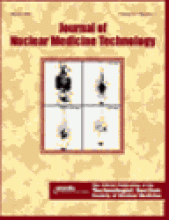
At the end of January, the SNMTS held its annual Mid-Winter Meeting in Hollywood, FL. What follows are reports from various committee meetings, planning sessions and corporate events that took place at the that meeting.
On Wednesday the members of the Executive Board, the staff, and the National Council of the Technologist Section, including Dr. Michael Gelfand and Dr. Mathew Thakur representing the SNM, participated in our triannual strategic planning session. In this session we forged the basic outline for the “path” to our future success: To advance the field of nuclear and molecular medicine through education and advocacy/promotion of science, technology, and practical application.
Goals were then developed under five headings: 1) Education, 2) Organization, 3) Outreach, 4) Advocacy and 5) Information. One goal under Organization was to restructure the governance of the Technologist Section to better respond to the changes in the environment and to meet the needs of the members in a more timely manner.
I am in the process of convening a task force, which I will head, to develop a new organizational structure. The proposals from this task force are timed for completion by mid-May to allow for review by the National Council well before the Annual Meeting in June.
The Professional Development and Education Fund (PDEF) was organized in response to a need for funding of special projects, educational development of members, grants for research, and other activities for nuclear medicine technologists. Since its formation we have developed a mission, defined the basic goals of the fund, and established the first funding program. This program, known as Corporate Friends, has resulted in committments of $20,000 each over the next two years from eight companies associated with the profession and interested in its future.
The companies that have signed on as partners in our future are Siemens Medical, Capintec, IDEC Pharmaceuticals, MDS Nordion, General Electric, Amersham Health, Bristol Myers Squid, and Alliance Imaging. At the Mid-Winter Meeting we met with the Corporate Friends to discuss the governance structure of the fund and the first two programs we are starting to benefit technologists.
A “gateway” type meeting is planned for April to make some final recommendations on entry level requirements for the profession. The group will be convened by Lyn Fulk, the chair of the committee. To ensure that the discussion is fair and covers all areas of the issue, the group will consist of a representative from each type of education available to our technologist students. The desired result is a final position paper for presentation at the Annual Meeting.
Several of the members have communicated with me concerning the PET/CT consensus statement. We have been very aware of how the consensus statement has been used to allow non-nuclear medicine-trained radiologic technologists to perform nuclear medicine procedures with only applications training and some continuing education. I hear you, and the SNMTS leadership is watching this very carefully. This was never the intent of the consensus statement nor was it envisioned in the discussion that took place at the meeting where the statement was developed.
In the long term, we will work out educational requirements for anyone who wishes to operate PET/CT scanners, and we will also deal with the problem in the short term. The SNMTS is developing a document which will outline resources currently available to allow nuclear medicine technologist in the field to embark on a course of study to gain the necessary knowledge to operate CT and PET/CT instruments. This will be accompanied by a recommendation on preceptor training to attain clinical competency.
The Workforce Taskforce, headed by Lyn Mehlberg, the Technologist Section president-elect, held its first brainstorming session at the MWM. The areas that were looked at were retention, recruitment and data analysis. In the area of retention, we are working on training programs for supervisors; for recruitment, an ambassador program is in the works; and in data analysis, a comprehensive survey of the profession is planned.
The SNM has, in the last few months, contracted with a law/lobbying firm, Arent Fox, based in Washington, DC. This firm is charged with fulfilling the goals and objectives outlined by the SNM Board of Directors in the area of government relations. The one technologist-specific issue that they are working on is licensure, and we have implemented a number of changes to take advantage of their effort.
We will have a two-pronged approach, one on the federal level led by Harish Vadya and the other on the state level led by LisaAnn Trembath. We recognize the critical importance of the federal CARE bill and the need for a consistant message, but we also realize, that the final legistlation comes out of the states and to ignore them at this point could be deterimental to our final aim—universal standards of education and care in nuclear medicine.







